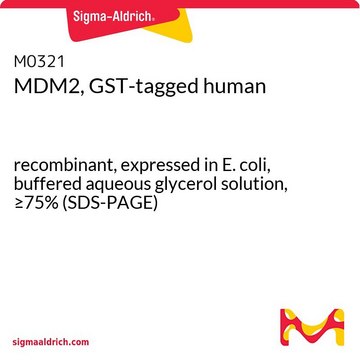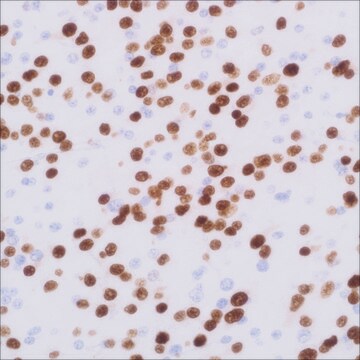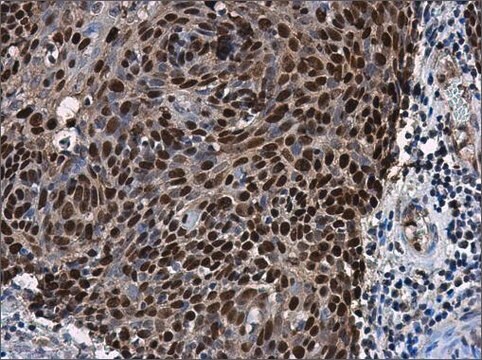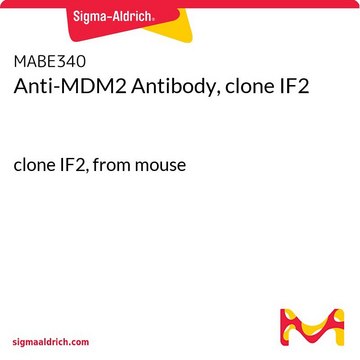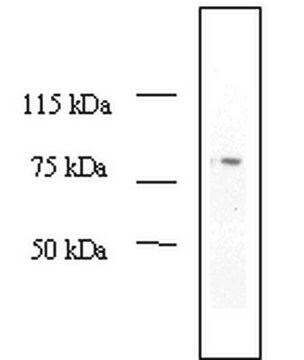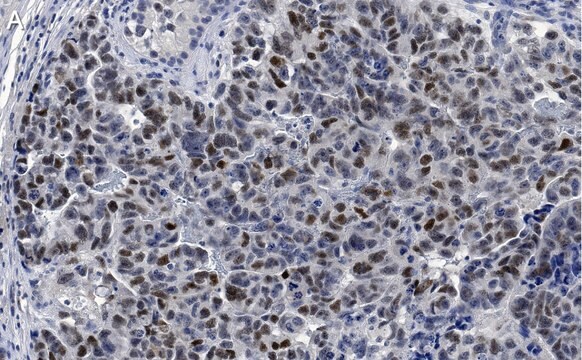479M-9
MDM2 (IF2) Mouse Monoclonal Antibody
Sinónimos:
Mouse double minute protein 2
About This Item
Productos recomendados
origen biológico
mouse
Nivel de calidad
100
500
conjugado
unconjugated
forma del anticuerpo
culture supernatant
tipo de anticuerpo
primary antibodies
clon
IF2, monoclonal
descripción
For In Vitro Diagnostic Use in Select Regions
Formulario
buffered aqueous solution
reactividad de especies
human
envase
vial of 0.1 mL concentrate (479M-94)
vial of 0.1 mL concentrate Research Use Only (479M-94-RUO)
vial of 0.5 mL concentrate (479M-95)
vial of 1.0 mL concentrate (479M-96)
vial of 1.0 mL concentrate Research Use Only (479M-96-RUO)
vial of 1.0 mL pre-dilute Research Use Only (479M-97-RUO)
vial of 1.0 mL pre-dilute ready-to-use (479M-97)
vial of 7.0 mL pre-dilute ready-to-use (479M-98)
vial of 7.0 mL pre-dilute ready-to-use Research Use Only (479M-98-RUO)
fabricante / nombre comercial
Cell Marque™
técnicas
immunohistochemistry (formalin-fixed, paraffin-embedded sections): 1:25-1:50 (concentrated)
isotipo
IgG
control
dedifferentiated liposarcoma, well-differentiated liposarcoma
Condiciones de envío
wet ice
temp. de almacenamiento
2-8°C
visualización
nuclear
Categorías relacionadas
Descripción general
Calidad
Canada - RUO
European Union - IVD
Japan - RUO
Forma física
Nota de preparación
Note: This requires a keycode which can be found on your packaging or product label.
Download the latest released IFU
Note: This IFU may not apply to your specific product lot.
Otras notas
Información legal
¿No encuentra el producto adecuado?
Pruebe nuestro Herramienta de selección de productos.
Elija entre una de las versiones más recientes:
Certificados de análisis (COA)
Lo sentimos, en este momento no disponemos de COAs para este producto en línea.
Si necesita más asistencia, póngase en contacto con Atención al cliente
¿Ya tiene este producto?
Encuentre la documentación para los productos que ha comprado recientemente en la Biblioteca de documentos.
Nuestro equipo de científicos tiene experiencia en todas las áreas de investigación: Ciencias de la vida, Ciencia de los materiales, Síntesis química, Cromatografía, Analítica y muchas otras.
Póngase en contacto con el Servicio técnico